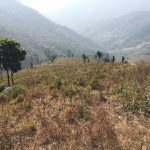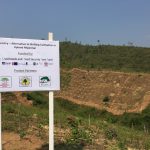Layout:
Showing 821-830 of 1007
-
Making Rice Production More Environmentally-Friendly
Title of document: Making Rice Production More Environmentally-Friendly Authors: Norman Uphoff and Frank B. Dazzo Ministry/Government Agency/Organisation: SRI International Network and Resources Center, International Programs, College of Agriculture and Life Sciences, Cornell University, Ithaca, NY 14853, USA Year of publication: 2016 Geographic focus: World wide Url original document: www.mdpi.com/journal/environment Summary: Irrigated rice production is one of the most essential agricultural activities for sustaining our global population, and at the same time, one of the agricultural sectors considered most eco-unfriendly. This is because it consumes a large share of available freshwater resources, competing with varied ecosystems as well as other economic sectors; its paddy fields are responsible for significant emission of greenhouse gases; and the reliance on chemical fertilizers and various agrochemicals contributes to pollution of soils and water systems. Read MoreGRET2015 10 downloads
-
Alder trees enhance crop productivity and soil microbial biomass in tea plantations
Title of document: Alder trees enhance crop productivity and soil microbial biomass in tea plantations Authors: P.E. Mortimer, H. Gui, J. Xu, C. Zhang, E. Barrios, K.D. Hyde Ministry/Government Agency/Organisation: Applied Soil Ecology Year of publication: 2015 Geographic focus: China Url original document: www.elsevier.com/located/apsoil Summary: Monoculture farming systems lead to soils depleted of nutrients and diminished microbial functional diversity, disrupting process crucial to maintaining soil health. The planting of trees in these monoculture systems is one way to improve soil nutrition and biodiversity. Therefore, the objective was how planting the N fixing tree Alnus nepalensis (7 years old), into monoculture tea (Camellia sinensis var., assamica) plantations (32 years old), influences the soil fungal and bacterial communities, and how this impacts on tea productivity. Read MoreGRET2015 2 downloads
-
Ecological Intensification Management of Maize in northeast China: Agronomic and Environment Response
Title of document: Ecological Intensification Management of Maize in northeast China: Agronomic and Environment Response Authors: Rongrong Zhao, Ping He, Jiagui Xie, Adrian M. Johnston, Xinpeng Xu, Shaojun Qiu, Shicheng Zhao Ministry/Government Agency/Organisation: Agriculture, Ecosystems and Environment Year of publication: 2016 Geographic focus: China Url original document: www.elsevier.com/located/agee Summary: Optimum field management practices need to be developed and improved to solve the challenge of increasing food production while retaining the ecological integrity of farming system underlying the goal of sustainable agriculture. In this study, the concept of ecological intensification (EI) was applied to a spring maize cropping system in Jilin province, China during 2009-2013. Results indicated that the average grain yield was 11.8 t/ha in the EI treatment; while the farmers’ practice (FP) treatment had an average of 11.4 t/ha grain yield across five seasons. Read MoreGRET2015 4 downloads
-
 Agroforestry Alternatives to Shifting Cultivation in Upland Myanmar, Chin State
Case study's fact sheet: Agroforestry Alternatives to Shifting Cultivation in Upland Myanmar, Chin State Supported by: World Agroforestry Center East and Central Asia (ICRAF-ECA) In practice since: 2015 Geographic focus: Myanmar School of agroecology: Agroforestry >>> see on map Read MorePierre Ferrand 79 downloads
Agroforestry Alternatives to Shifting Cultivation in Upland Myanmar, Chin State
Case study's fact sheet: Agroforestry Alternatives to Shifting Cultivation in Upland Myanmar, Chin State Supported by: World Agroforestry Center East and Central Asia (ICRAF-ECA) In practice since: 2015 Geographic focus: Myanmar School of agroecology: Agroforestry >>> see on map Read MorePierre Ferrand 79 downloads -
 Agroforestry Alternatives to Shifting Cultivation in Upland Myanmar
Case study's fact sheet: Agroforestry Alternatives to Shifting Cultivation in Upland Myanmar Supported by: World Agroforestry Center East and Central Asia (ICRAF-ECA) In practice since: 2016 Geographic focus: Myanmar School of agroecology: Agroforestry >>> See on map Read MorePierre Ferrand 48 downloads
Agroforestry Alternatives to Shifting Cultivation in Upland Myanmar
Case study's fact sheet: Agroforestry Alternatives to Shifting Cultivation in Upland Myanmar Supported by: World Agroforestry Center East and Central Asia (ICRAF-ECA) In practice since: 2016 Geographic focus: Myanmar School of agroecology: Agroforestry >>> See on map Read MorePierre Ferrand 48 downloads -
Permaculture/Agroecology System in Timor-Leste National School Curriculum for Basic Education
Title of document: Permaculture/Agroecology System in Timor-Leste National School Curriculum for Basic Education Authors: Eugenio Lemos Ministry/Government Agency/Organisation: Feed the Future Year of publication: 2016 Geographic focus: Timor-Leste Url original document: http://www.fao.org/3/a-bl923e.pdf Summary: Timor-Leste is a half Irland country with a total population of 1.2 million people; it is geographically situated between Asia and Pacific region. It is a tropical country and 80% of its population live in rural areas. Agriculture, fishery and forestry are the main economical mainstays. Read MoreGRET2015 12 downloads
-
The Current and Future Roles of Small Farm Resources Centre in Extension and Advisory Services
Title of document: The Current and Future Roles of Small Farm Resources Centre in Extension and Advisory Services Authors: Abram J. Bicksler; Ricky Bates; Rick Burnette; Boonsong Thansrithong Ministry/Government Agency/Organisation: Feed the Future Year of publication: 2014 Geographic focus: Southeast Asia Url original document: Summary: Small Farm Resources Centre (SFRC) model is not a new approach to agricultural outreach. Extension variations on this theme have been in operation in many parts of the world for years, yet thorough assessment of the regional efficacy of SFRC is lacking. Read MoreGRET2015 3 downloads
-
Lending credence: motivation, trust, and organic certification
Title of document: Lending credence: motivation, trust, and organic certification Authors: Steve Holland Ministry/Government Agency/Organisation: Holland Agricultural and Economics Year of publication: 2016 Geographic focus: Global Url original document: https://ideas.repec.org/p/ags/aaea15/205192.html Summary: Various forms of regulation are often used to improve the performance of markets when relevant information is lacking. A good example is markets for credence goods or goods with characteristics that are difficult or impossible for consumers to observe even after purchase and use. Read MoreGRET2015 2 downloads
-
Toward thick legitimacy: creating a web of legitimacy for agroecology
Title of document: Toward thick legitimacy: creating a web of legitimacy for agroecology Authors: Maywa Montenegro de wit and Alastair Iles Ministry/Government Agency/Organisation: University of Berkeley, California, US Year of publication: 2016 Geographic focus: Global Url original document: http://food.berkeley.edu/wp-content/uploads/2014/09/Iles-Montenegro-towards-legitimacy-for-agroecology.pdf Summary: Legitimacy is at the heart of knowledge politics surrounding agriculture and food. When people accept industrial food practices as credible and authoritative, they are consenting to their use and existence. With their thick legitimacy, industrial food systems paralyze the growth of alternative agricultures, including agroecology. Questions of how alternative agricultures can attain their own thick legitimacy in order to compete with, and displace, that of industrial food have not yet attracted much scrutiny. We show that both agroecological and scientific legitimacy grow out of a web of legitimation processes in the scientific, policy, political, legal, practice, and civic arenas. Crucially, legitimation often comes through meeting what we call ‘credibility tests’. Agroecologists can learn to navigate these co-constituted, multiple bases of legitimacy by paying attention to how credibility tests are currently being set in each arena, and beginning to recalibrate these tests to open more room for agroecology. Using a schematic of three non-exclusive pathways, we explore some possible practical interventions that agroecologists and other advocates of alternative agricultures could take. These pathways include: leveraging, while also reshaping, the existing standards and practices of science; extending influence into policy, legal, practical, and civic arenas; and centering attention on the ethical legitimacy of food systems. We conclude that agroecologists can benefit from considering how to build legitimacy for their work. Read MoreGRET2015 9 downloads
-
Sustainable commercialization of new crop for the agricultural bieconomy
Title of document: Sustainable commercialization of new crop for the agricultural bieconomy Authors: N.R. Jordan; K. Dorn; B. Runch; P. Ewing; A. Williams; K.A. Anderson; L. Felice; K. Haralson; J. Goplen; K. Alterdorf; A. Fernandez; W. Phippen; J. Sedbrook; M. Marks; K. Wolf; D. Wyse; G. Johnson Ministry/Government Agency/Organisation: Science of the Anthropocene Year of publication: 2016 Geographic focus: Global Url original document: elementascience.org Summary: Society is now calling on agriculture to provide goods and services that begin with enhanced production of food and other materials, but range far beyond. For example, agriculture is under increasing pressure to achieve complex sustainability goals such as food security, stewardship of biodiversity, compatibility with energy and water systems, and resilience to climate change and other potential shocks. Read MoreGRET2015 6 downloads
« Previous
1 2 3 4 5 6 7 8 9 10 11 12 13 14 15 16 17 18 19 20 21 22 23 24 25 26 27 28 29 30 31 32 33 34 35 36 37 38 39 40 41 42 43 44 45 46 47 48 49 50 51 52 53 54 55 56 57 58 59 60 61 62 63 64 65 66 67 68 69 70 71 72 73 74 75 76 77 78 79 80 81 82 83 84 85 86 87 88 89 90 91 92 93 94 95 96 97 98 99 100 101 Next »

 Asia & Mekong Region
Asia & Mekong Region  Cambodia
Cambodia  Laos
Laos  Myanmar
Myanmar  Other
Other  Vietnam
Vietnam